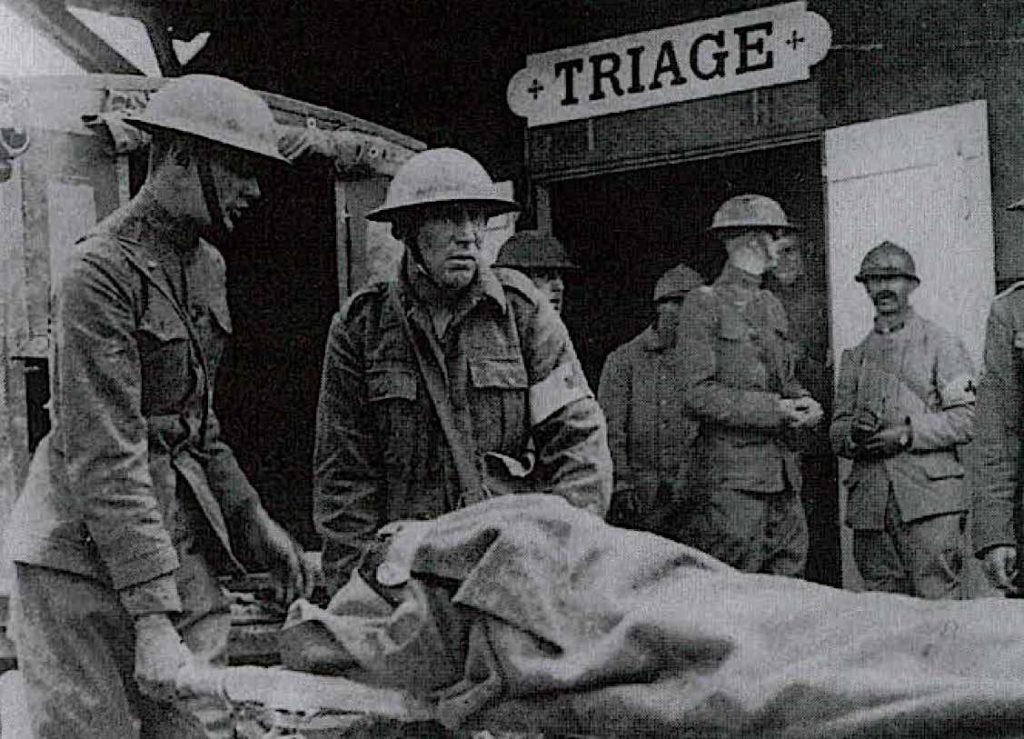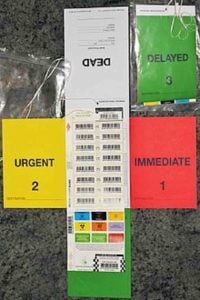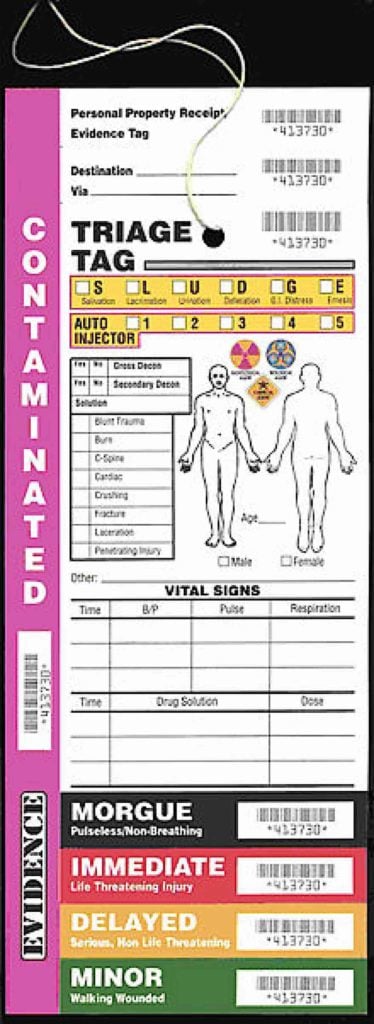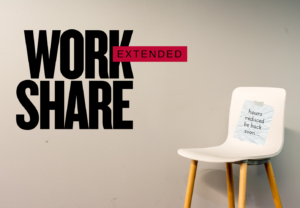
Triage Productivity Method: the 4-day week — proof “Triage Productivity” rescues 20% of your time; plus, 3 essential methods
Part 1 of a 3-part “Triage Productivity” series
Triage Productivity (TM) is designed around prioritizing workflow as if your life depended on it — modelled somewhat after Triage field hospitals. (We’re being colourful to make a point. Bear with us.)
In Triage, particularly in field hospitals or war zones, the famous red, yellow, green, black tag approach determines life or death — so-called “culling”. (Hint, black tag, you’re dead, but pain medication is given.) It’s ruthless but necessary — and evolved in World War 1. Here, we’ve adapted it to a productivity concept for the workplace: red means “IMMEDIATE and can be saved”; yellow is “URGENT”; green means “DELAYED” or “safe for now, can deal with later” — and black is “Dead man walking.”
Triage Productivity: culling the wasteful

The goal of Triage Productivity — at least how we frame it — is to achieve all your important tasks in 30 hours a week, and cull the wasteful tasks. Why? Well, wouldn’t it be nice if you could regularly take Friday’s off? More importantly, you know all your key tasks and milestones — those red and yellow tags — are accomplished. So, now, if you’re still working Fridays, you can deal with the green tags. What do you do with the “black tags”? Forget them, they’re dead already. (Don’t waste even one second on them.) Instead of wasting time rescuing an impossible task, let it go and accomplish as many reds and yellows as you can.
Clear? No, of course not, but let’s start with proof that it works. Then, we’ll show how it works. We developed the Triage Productivity Method; if you have any questions, reach out to us on our contact form>>
The 4-day work week case
We have all read stories about successful four-day work week projects — with envy. This probably says more about our craving for quality family time than it does about our need for efficiency. Yet, what these successful 4-day pilot programs prove is that “Triage Productivity” — prioritizing and actioning according to Triage principles — can and does save you at least twenty percent of your time — the equivalent of going from five-day work week to four.

The best known four-day work week project by a credible, large company is Perpetual Guardian in New Zealand. [2] They began with an eight-week trial, designed to measure productivity, inviting employees to work four days a week, without a pay cut. They made the standard work week only 30 hours. For results, they saw a 40 percent jump in employee engagement and a 30 percent increase in productivity. Not only was the productivity-to-hours worked ratio positive, but the productivity of the team was also higher. More for less.
Proof Triage Productivity works

When employees are offered a four-day work week — a growing trend — they are explicitly cautioned that they must at least equal current productivity. The goal is an increase, but the minimum success benchmark is to equal productivity with 20 percent less time. As a natural process, employees fall into “Triage Productivity” — putting what’s important first, dismissing the unimportant — abolishing time-wasting tasks. Later, we’ll explain some of the methods that work for Triaging.
Very few companies have failed after piloting these programs. Across many sectors, most companies report increases in overall productivity, not decreases. Enthusiasm and efficiency improve. Teams become “smarter and more productive.” There is no time for social media breaks — teams want to get their work done in the four days, to preserve their 3-day weekend. (And, they now have a 3-day weekend for all their social activities.)
One of the fringe benefits of companies with “four-day work weeks on the same pay” is recruiting top talent — who are naturally efficient and productive. The best people beg to work at your company. They come knocking. The best-of-the-best will find you.
Rescuing Fridays with Triage Productivity
The various 4-day week pilots — programs that have now become permanent policy at various companies — is clear proof that “Triage Productivity” works. Even if you’re not ready for the four-day revolution, you can bring some of the work ethic into your five day week. (By the way, you really have a four-day week, don’t you? How much work do you actually get done on a Friday?)
Pose this question to yourself. What tactics would I use to attain at least the same amount of productivity with one-day-a-week less? We do it now, don’t we, when there’s a long weekend coming, and we want to book the Friday off? We show our boss we achieved all our tasks and goals — so, please can I have the extra day? If we can do it “here and there” we can do it all the time. All it requires is smart time management.
3 critical Triage tips on how to boost productivity
In part 2, we’ll cover these tips in greater detail, but, for now, here’s a quick overview of things that can rescue your Fridays:
1. Triage Tag Everything: Red, Yellow, Green, Black
Be fast and ruthless. Don’t waste time with productivity software, unless it speeds you up. Don’t add other colours — just black for “dead already”; red for urgent, fix this; yellow for “delayed but important”, and green for “can do any time.” If it’s going to take too many resources, black or green tag it! If it’s a pipedream, black tag it! If it’s an important milestone, yellow tag! If it’s mission critical, red tag! If it can’t wait even one day, “red.” If it’s just nice to have, green tag.
2. Result-specific goals only:
Make all your goals results milestones. Productivity goals should never be about how many hours you worked, how many hours you were at your desk, how many hours you were in meetings. Only results matter. Period. If someone out-performs the team but works only 20-hours a week, the person deserves a raise.
3. 30-Hour planning
Even if you work a 40-hour work, plan as if you only have 30 — then achieve within those 30. Before you know it, you’ll be given Friday’s off! Or, you’ll have lots of time for those pesky green tags.
Don’t waste even one moment on the black tags. Bury them, and move on with ruthless dispatch.
- In part 2, we explore fully how the system can work to improve your efficiency — allowing you to accomplish in a 30-hour week, what you currently manage in forty hours.
Do you need help with your team’s productivity. Let Pivotal HR help you develop a more efficient productivity system for your team. Contact us now:
Contact Pivotal

Word Origin of Triage
Date: 1727, “action of assorting according to quality,” from French triage “a picking out, sorting,” from Old French trier “to pick, cull” (see try). There seems to be some influence from or convergence with Latin tria “three” (e.g. triage for “coffee beans of the third or lowest quality”). In World War I, adopted for the sorting of wounded soldiers into three groups according to the severity of their injuries. [1]
NOTES
[1] Thesaurus.com
[2] “Could your firm move to a four-day week?” BBC https://www.bbc.com/news/business-48125411
TM — “Triage Productivity” is a Trademark Pivotal Solutions, branded by Persona Corp.


 Our HR solutions experts can recommend the right mix of HR outsourced services to make your entry into Canada easier.
Our HR solutions experts can recommend the right mix of HR outsourced services to make your entry into Canada easier.  Pivotal Employment Management Services co-hires your workforce, simplifying entry of your business in Canada.
Pivotal Employment Management Services co-hires your workforce, simplifying entry of your business in Canada. 
















Don't Allow Standard Expectations to be What Sets Employers Apart